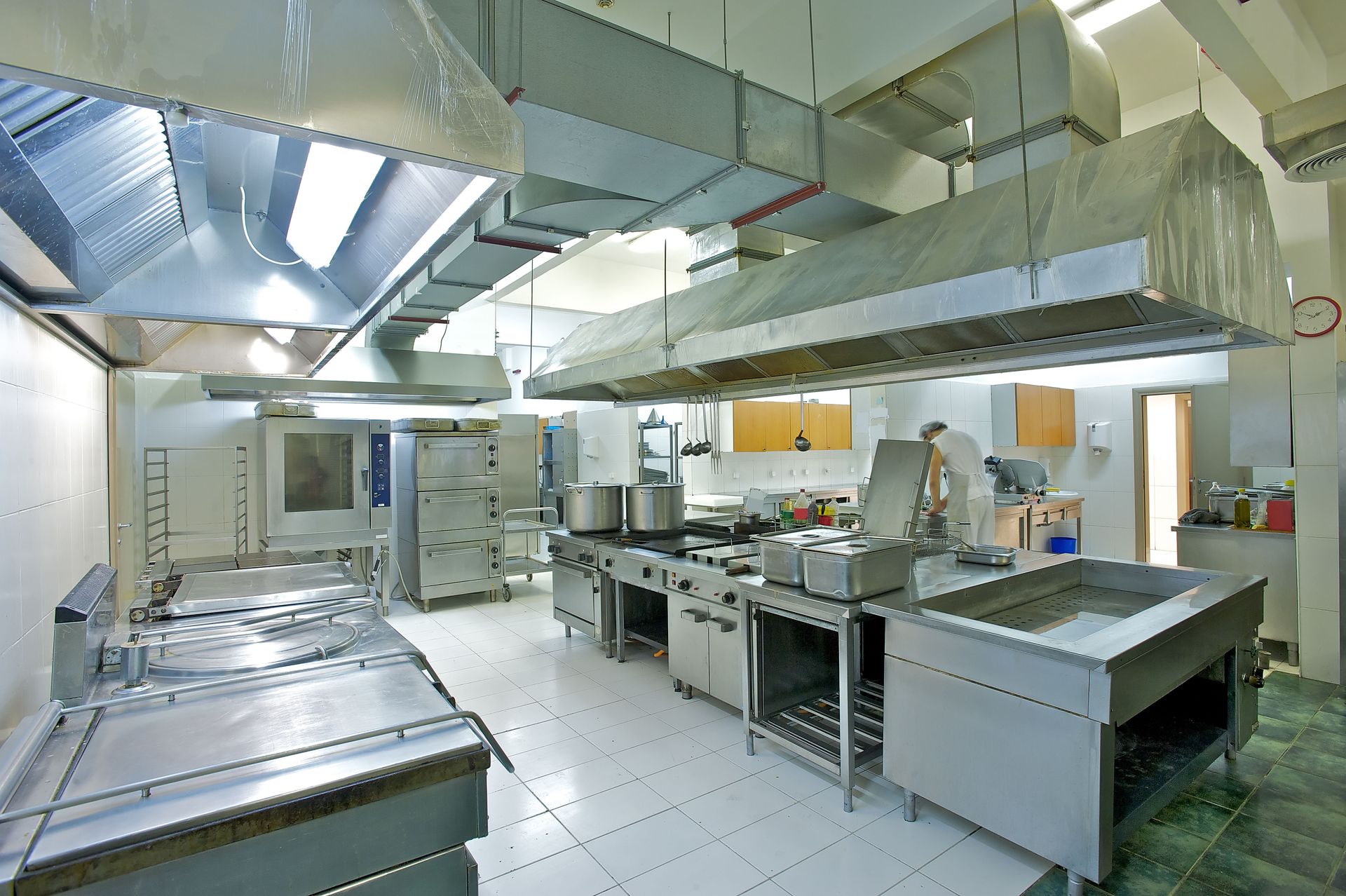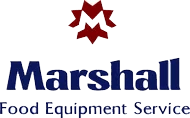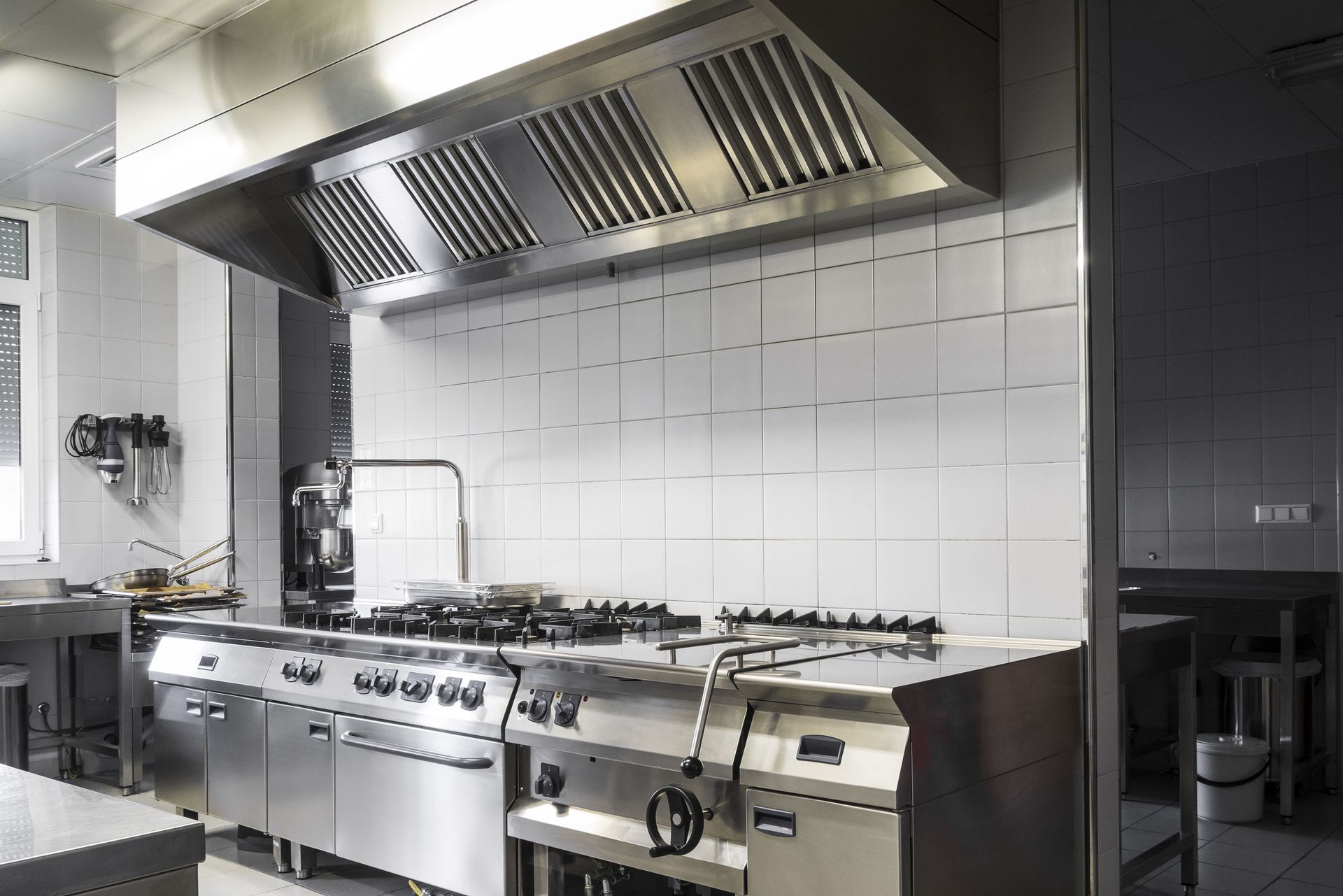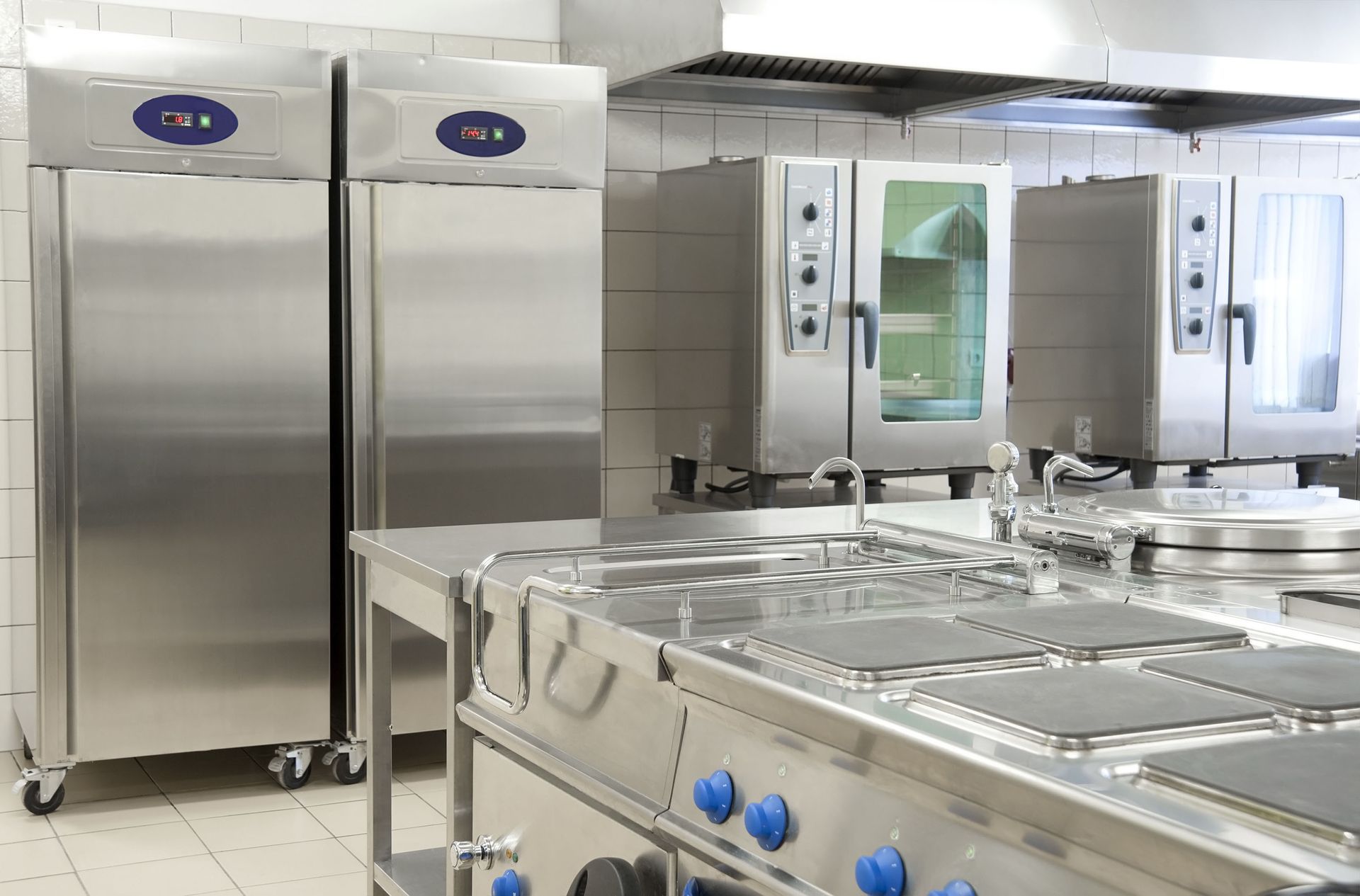August 15, 2025
The foodservice industry is an extremely demanding environment where timing, consistency, and equipment reliability directly impact customer satisfaction and revenue. According to the National Restaurant Association, foodservice industry sales are projected to hit over $1 trillion in 2025, and most consumers say they would dine out more often if they could afford it. With so much competition, restaurants must operate at peak efficiency to meet customer expectations. That means every piece of restaurant equipment in the kitchen must perform flawlessly—especially during the busiest hours of the day. When something breaks down, the effects ripple through the entire operation, from prep work to plating to service speed.
Understanding the most common types of restaurant equipment failures, along with how professional technicians address them, can help owners and managers respond quickly, reduce downtime, and protect their investment. Below are some of the issues that occur most frequently in commercial kitchens and how experts bring these critical tools back to life.
1. Oven and Range Malfunctions
Ovens and ranges are central to food preparation in virtually every restaurant. When they fail, menu options can be drastically reduced, leading to frustrated customers and lost sales. Common issues include uneven heating, burners that won’t ignite, malfunctioning thermostats, or damaged heating elements. These problems often start small but can escalate quickly if ignored. For example, a minor temperature fluctuation can result in undercooked proteins or overbaked pastries, hurting both quality and food safety.
Professional repair technicians start by running diagnostic checks to identify the root cause. For gas ranges, they may examine pilot lights, ignition systems, and gas flow. For electric units, they test heating elements and wiring connections. In some cases, recalibrating the thermostat is enough to restore even cooking; in others, replacing a worn part is necessary. Regular maintenance, such as cleaning burner ports and removing grease buildup, is essential for preventing performance issues and extending the lifespan of the equipment.
2. Dishwasher Breakdowns
Commercial dishwashers handle a constant stream of plates, glassware, and utensils, making them one of the hardest-working machines in the kitchen. Problems like clogged spray arms, faulty heating elements, or drain pump malfunctions can slow down service and compromise sanitation. Without a functioning dishwasher, staff may be forced to hand-wash items, which is slower and less consistent in meeting health department standards.
When a dishwasher stops performing properly, professionals typically begin by inspecting the spray arms and cleaning any debris that may block water flow. They also check the water temperature to ensure it reaches sanitizing levels. Drainage problems are addressed by clearing clogs and inspecting pump components. In some cases, replacing a heating element or thermostat is necessary to restore full functionality. Routine descaling and filter cleaning can help prevent many of these issues from occurring in the first place.
3. Grill and Griddle Wear
Grills and griddles are essential for cooking everything from breakfast staples to signature entrees, but their constant exposure to high heat and food debris can cause problems over time. Common failures include uneven heating, damaged thermostat controls, warped cooking surfaces, and reduced heat retention. These issues can affect cooking consistency, making it difficult to deliver the same flavor and texture customers expect.
Technicians address these problems by checking for blockages in gas lines, ensuring burners are aligned and functioning, and cleaning carbon buildup that can insulate heat from the cooking surface. Damaged grates may be replaced, and warped griddle plates can often be resurfaced to restore even cooking. Regular seasoning of griddle surfaces and prompt cleaning after each service can help maintain performance and extend the life of the equipment.
4. Mixer Malfunctions
In bakeries, pizzerias, and high-volume restaurants, mixers are indispensable for doughs, batters, and sauces. Over time, parts like gears, belts, and motors can wear down, especially when machines are pushed beyond their capacity. Common issues include unusual noises during operation, inconsistent mixing, or the unit shutting down unexpectedly due to overheating.
Professionals begin troubleshooting by inspecting the motor, gearbox, and drive belts. They may lubricate moving parts, replace worn gears, or upgrade attachments that are no longer functioning properly. Overloading the mixer is one of the fastest ways to cause damage, so operators should always follow manufacturer capacity guidelines. Regular cleaning—especially removing flour and dough from vents and seals—also plays a key role in preventing premature wear.
5. Fryer Failures
Deep fryers are a staple in many restaurant kitchens, but they can be prone to issues such as thermostat malfunctions, heating element problems, or clogged oil filtration systems. These failures can lead to oil that doesn’t reach the proper temperature, resulting in soggy, undercooked food that fails to meet customer expectations.
When servicing fryers, technicians often start by draining the oil and thoroughly cleaning the fry pot. They test the thermostat for accuracy and inspect the heating elements for damage. Clogged filters are replaced or cleaned to ensure smooth oil circulation. To prevent breakdowns, restaurants should filter their fryer oil regularly and schedule deep cleanings to remove carbon buildup that can strain the machine.
6. Food Processor Breakdowns
Food processors save hours of prep time by quickly chopping, slicing, and pureeing ingredients. When they fail, kitchen staff must spend extra time on manual prep, slowing down service. Issues such as dull blades, cracked bowls, and faulty motors are among the most common problems.
Repair specialists sharpen or replace blades, swap out damaged containers, and inspect motor components for wear. Regular cleaning after each use is essential, as leftover food particles can cause buildup that stresses the motor. Properly storing blades and attachments can also prevent damage and keep the unit functioning efficiently.
7. Steam Table and Warmer Malfunctions
Steam tables and warmers keep food at safe serving temperatures, making them vital for buffets, cafeterias, and high-volume service lines. Malfunctions often involve faulty thermostats, burned-out heating elements, or low water levels that affect steam generation. Any of these issues can compromise food safety and quality.
Professionals address these problems by checking thermostat calibration, replacing heating elements, and ensuring that the water reservoirs are filled to the correct level. Preventive maintenance includes descaling to remove mineral deposits, cleaning the interior regularly, and inspecting power cords for wear. Keeping these units in good working order ensures that hot foods stay safe and appetizing throughout service.
While it’s important to address equipment failures quickly, the best strategy is to prevent them from happening in the first place. Professional service providers often offer preventive maintenance programs tailored to the restaurant’s specific equipment lineup. These programs involve scheduled inspections, part replacements, and thorough cleanings to keep machines operating at their best.
For example, a quarterly maintenance schedule might include calibrating thermostats on ovens, checking belts and gears on mixers, and testing oil filtration systems on fryers. This proactive approach not only reduces the likelihood of sudden breakdowns but also helps extend the life of costly equipment. In the long run, preventive maintenance can save restaurants thousands of dollars in emergency repair costs and lost sales due to downtime.
Every minute counts in a restaurant kitchen, and reliable equipment is the backbone of consistent, high-quality service. By understanding the most common failures in key pieces of restaurant equipment—and knowing how professionals fix them—owners and managers can better plan for maintenance, reduce costly downtime, and keep operations running smoothly. Partnering with a trusted service provider like Marshall Food Equipment Service ensures that your kitchen’s essential tools are always ready for the next rush, allowing you to focus on creating the exceptional dining experience your customers expect.



